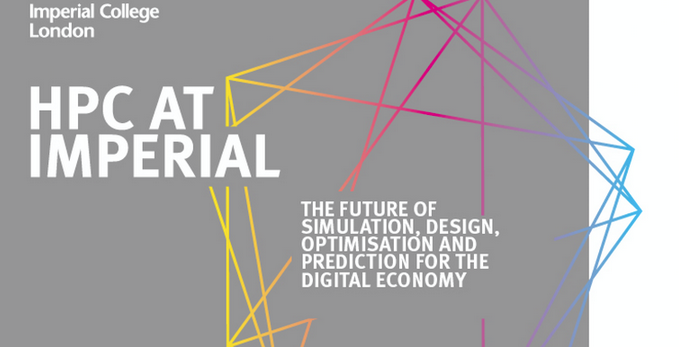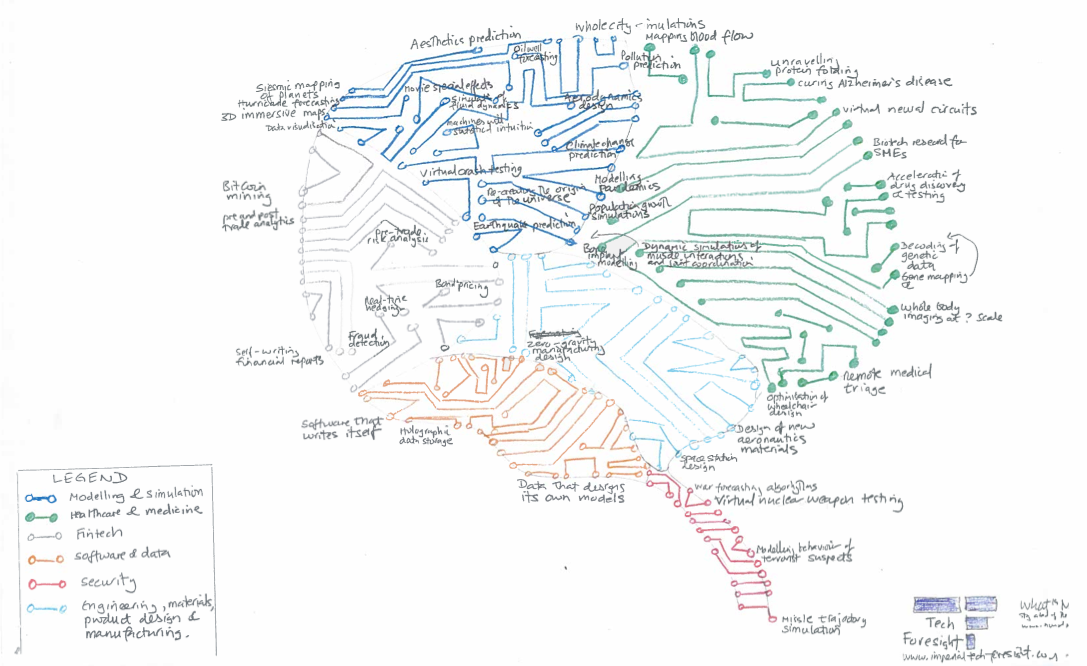Just FYI, anyone that’s interested in HPC, super-computing, advanced modelling & simulation, problems, prediction, cyber-security and any associated field might be interested in this. It’s on Thursday 23 February in London. Event link here.
Beginning of a new Current & Future uses of HPC map below….
Current & Future Applications of HPC
Modelling & Simulation
Preventing the invention of unnecessary
Prediction of technology breakthroughs
Modelling specific species against climate change
Dynamic longevity prediction
Predicting M&A activity/hostile takeovers
Lifelike recreation of dead actors in movies
Volcano modelling
Real time national mood modelling
Hyper-local personal weather forecasts
Complete human brain simulations
Prediction of social unrest using global social media feeds
Finding holes in existing research
Finding new knowledge in Big Data
Automation of scientific research
Radiation shield modelling
Molecular dynamics modelling
Space weather forecasting
Trawling scientific data to find genetically applicable treatments
Molecular dynamics forecasting
Automation of scientific research
Aesthetics prediction
Seismic mapping of planets
Hurricane forecasting
Modelling of tornado trajectory & speed
Galaxy simulations
Oil well forecasting
Movie special effects
Simulation of fluid dynamics
Virtual crash testing
Re-creation of the origin of the universe
Earthquake prediction
Population growth simulations
Climate change modelling
Aerodynamics design
Whole city simulations
Pollution forecasting
Radiation shield modelling
Molecular dynamics modelling
Modelling impacts of bio-diversity loss
Power grid simulation & testing
Modelling of organizational behaviour
Optimization of citywide traffic flows
Emergency room simulation
Major incident modelling & simulation
Space weather forecasting
Healthcare & Medicine
Dynamic real-time individual longevity forecasts
Mapping blood flow
Prediction of strokes, brain injury & vascular brain disease
Pandemic modelling
Unravelling protein folding
Curing Alzheimer’s disease
Virtual neural circuits
Bio-tech research for SMEs
Acceleration of drug discovery & testing
Decoding of genetic data
Whole body imaging at scale
Remote medical triage
Foreign aid & disaster relief allocation
Dynamic simulations of muscle & joint interactions
Bone implant modelling
Modelling of the nervous system
Longevity prediction at birth
Design of super efficient water filters
Fintech
Pre-trade risk analysis
Bond pricing
Real-time hedging
Fraud detection
Self-writing financial reports
Automatic regulatory control & compliance
Pre and post-trade analysis
Dynamic allocation of government tax revenues
News prediction
Flash crash prediction
Optimisation of investment strategies
Automated hiring & firing of employees
Automated due diligence for M&A
Whole economy simulation
Software & data
Software that writes itself
Holographic data storage
Coding for ultra-low energy use
Data that generates its own models
Engineering, materials & manufacturing
Space station design
Space colony design
Design of new aeronautics materials
Zero gravity manufacturing & design
Predicting properties of undiscovered materials
Design of smart cities
Identification of redundant assets
Optimization of just in time manufacturing
Optimization of crowd-sourced delivery networks
Design of ‘impossible’ buildings & structures
Security
Recording of every individual human conversation on earth
Modelling of factors likely to lead to a revolution
Deliberate cyber-facilitation of revolutions
Breaking 512-bit encryption ciphers
War forecasting algorhythms
Virtual nuclear weapon testing
Modelling behaviour of terrorist suspects
Crime prediction down to individual streets
Identification of terrorist suspects
Forecasting of geo-political upheavals
Hyper-realistic war gaming
Simulation of large scale cyber attacks
Missile trajectory simulation
Screening of data from multiple spectra & media in real time
Threat detection
Crisis management decision support
Note: This is just me going off on a bit of a jazz riff at the moment. All subject to change!


